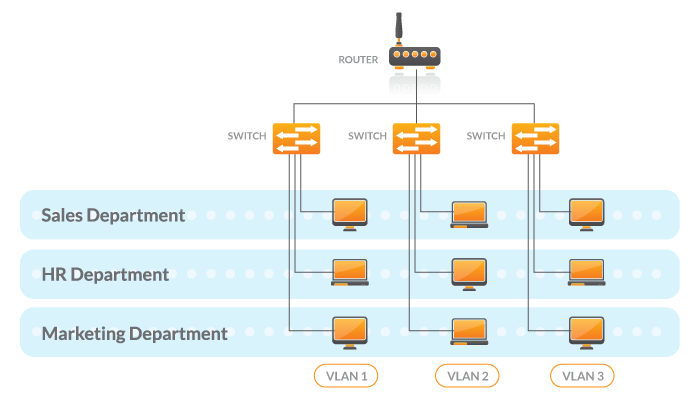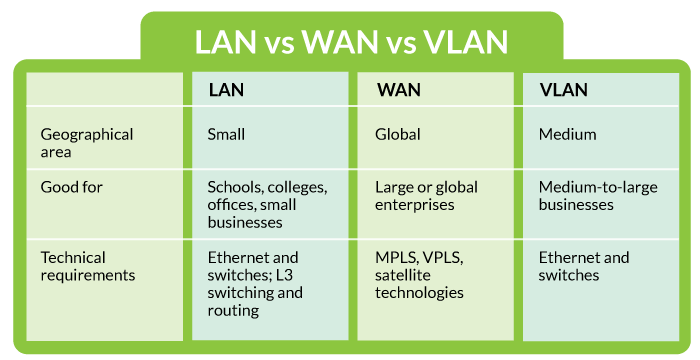Here’s a brief overview of how virtual local area networks work and why businesses need this type of network. Learn about the different types of VLAN and what options are available for those interested in VoIP.
What is a Virtual Local Area Network?
A Virtual Local Area Network (VLAN) is a local computer network that breaks up a single switched network into a set of overlaid virtual networks. It groups together subsets that share one LAN while separating network traffic for each group.
The virtual LAN breaks up network traffic so that only the devices within the necessary virtual network receive it. This helps your IT infrastructure avoid network congestion.

What Do You Need to Set Up Virtual Local Networks?
With virtual local area networks, you don’t usually have to buy additional equipment. You can set up a VLAN with most existing switches, access points, and routers.
Virtual LANs operate at the link layer, Layer 2 switch. And they can be used as a single physical link or extended to multiple links by additional Layer 2 switches. You will also need Layer 3 switches for each individual virtual LAN. And you will use Ethernet cables to connect all these components to the router. Depending on your setup, you may even benefit from VLAN trunk links that carry more than one VLAN.
What Does a VLAN Do?
Medium-sized businesses and large enterprises use VLANs to partition, divide, and manage network traffic efficiently. For instance, a company can separate its sales department traffic from its human resources traffic by assigning different virtual networks for each.
Similarly, you can even arrange all voice traffic from deskphones or IP phones to fall within one network and other devices on another network. This allows you to maintain high voice call quality with little-to-no delay or lags.
This way, you reduce network congestion by efficiently managing and distributing network traffic. And this further helps improve network performance on a much larger scale.

Types of VLAN
Now, there are 5 main types of virtual local area networks. Here’s a quick overview of each type:
Default VLAN
Refers to the one network that a device’s ports belong to when switched on – especially with a new switch. The default is VLAN 1 for most switches. It is important to change this for security; however, note that you cannot rename or delete this virtual LAN.
Data VLAN
Divides the network into a group of users and a group of devices. Also known as user VLAN, this is only used for carrying user-generated data.
Voice VLAN
Configured to carry voice traffic, voice VLANs usually have high transmission priority over other types of traffic. This separate virtual local area network ensures VoIP call quality by preserving bandwidth reasonably.
Management VLAN
Equipped to manage infrastructure and access management capabilities of a switch like system monitoring, logging, and so on. This virtual local area network is also used to separate management traffic from other traffic and saves enough bandwidth for management even when general user traffic is high.
Native VLAN
Allocated to an 802.1Q trunk port, which places untagged traffic (traffic not tagged by any virtual local area network) within the native VLAN.
Using VoIP with VLAN
Since virtual LANs segment and separate traffic, VoIP users can benefit from separating data and voice traffic within one network. You can apply VoIP QoS or Quality of Service settings via VLAN tagging to provide special high priority to voice traffic.
Such segmentation also prevents VoIP devices from competing with traffic from other devices. This reduces overall delays and improves VoIP call quality. And you can quickly troubleshoot VoIP issues since that traffic is separated with virtual LANs.
Want to learn more about using VoIP with VLAN? Our tech experts at United World Telecom can help you identify the best VoIP solution for your business. Call us today or chat with us online to learn more!

